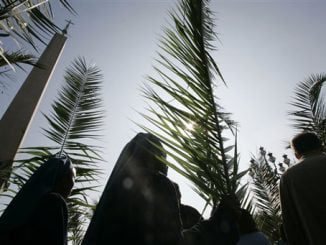Last week we read about the sower of seeds, the first of eight parables Jesus taught beside the Sea of Galilee in Matthew 13. The second parable is the Parable of the Wheat and the Tares. While often misinterpreted, this parable is a simple story about good and evil and the impact of the seeds of disbelief. The parable has been used in support of religious tolerance, since Jesus shows that rooting out the tares from the wheat before harvest time could damage the wheat. The disbelievers will be separated from those who believe at the end.
24 Another parable put he forth unto them, saying, The kingdom of heaven is likened unto a man which sowed good seed in his field: 25 But while men slept, his enemy came and sowed tares among the wheat, and went his way. 26 But when the blade was sprung up, and brought forth fruit, then appeared the tares also. 27 So the servants of the householder came and said unto him, Sir, didst not thou sow good seed in thy field? from whence then hath it tares? 28 He said unto them, An enemy hath done this. The servants said unto him, Wilt thou then that we go and gather them up? 29 But he said, Nay; lest while ye gather up the tares, ye root up also the wheat with them. 30 Let both grow together until the harvest: and in the time of harvest I will say to the reapers, Gather ye together first the tares, and bind them in bundles to burn them: but gather the wheat into my barn.



